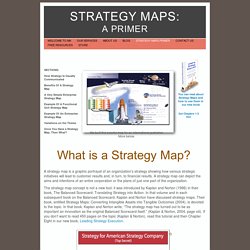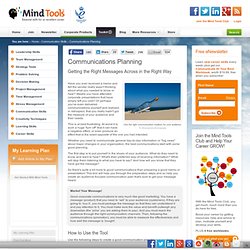

Change Process. Build a Coalition. Strategy Maps: A Primer. Constructing a strategy map, as we’ve said, produces many benefits: senior team alignment, clarification of the strategy, ease of communication to employees, and can help generate enthusiasm by employees for the strategy.

But in reality, creating a strategy map is just the beginning of the work required for strategy execution. In our book, Leading Strategy Execution, we devote two chapters to what leaders need to do once the strategy map is complete. Chapter Six, “Aligning Local Effort (Job Three),” acknowledges that strategies get carried out in work units, not at the top of the organization, and guide the reader in thinking through how the top can align itself with the middle-level. Chapter Seven, “Designing Your Organization (Job Four),” addresses, “the art and science of fitting the institutional components of the firm—its structure, business processes, and its entire social system—to the strategy.” We view strategy execution as a three step process: Step 1. PMA - 3.Plan - Develop Project Communication Plan. Communications Planning. Getting the Right Messages Across in the Right Way Use the right communication medium for your audience. © iStockphoto/Antonprado Have you ever received a memo and felt the sender really wasn't thinking about what you needed to know or hear?

Maybe you have attended corporate presentations that have simply left you cold? Or perhaps you've even delivered communications yourself and realized, in retrospect, that you really hadn't got the measure of your audience and their needs. This is at best frustrating. Whether you need to communicate general day-to-day information or "big news" about major changes in your organization, the best communications start with some good planning. The first step is to put yourself in the shoes of your audience. So there's quite a bit more to good communications than preparing a good memo or presentation! Market Your Message! Good corporate communications is very much like good marketing. How to Use the Tool Download Worksheet Understand Your Objectives. The Planning Cycle - Project Management Tools from MindTools.com. A Planning Process for Medium-Sized Projects Planning is an iterative process. © iStockphoto/djgunner The Planning Cycle brings together all aspects of planning into a coherent, unified process.

By planning within this structure, you will help to ensure that your plans are fully considered, well focused, resilient, practical and cost-effective. You will also ensure that you learn from any mistakes you make, and feed this back into future planning and Decision Making. Planning using this cycle will help you to plan and manage ongoing projects up to a certain level of complexity – this will depend on the circumstance. How to Use the Tool It is best to think of planning as a cycle, not a straight-through process. Once you have devised a plan you should evaluate whether it is likely to succeed. In this case you should cycle back to an earlier stage. Finally, you should feed back what you have learned with one plan into the next. The Planning Cycle is shown in figure 1: Stage 1. Stage 2. Project Planning a Step by Step Guide. The key to a successful project is in the planning.

Creating a project plan is the first thing you should do when undertaking any kind of project. Often project planning is ignored in favour of getting on with the work. However, many people fail to realise the value of a project plan in saving time, money and many problems. This article looks at a simple, practical approach to project planning. On completion of this guide, you should have a sound project planning approach that you can use for future projects. Step 1: Project Goals A project is successful when the needs of the stakeholders have been met.
As a first step, it is important to identify the stakeholders in your project. The project sponsor.The customer who receives the deliverables.The users of the project outputs.The project manager and project team. Once you understand who the stakeholders are, the next step is to find out their needs. Once you have established a clear set of goals, they should be recorded in the project plan.